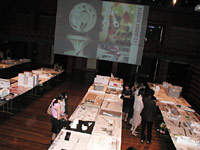|
||||||||||||||||||||||||||||||||||||||
| Technology for Interior Architects 4 - INTA3272 | ||||||||||||||||||||||||||||||||||||||

Description Lighting: Environment. Natural and artificial lighting. Quantitative and qualitative aspects of lighting design. Electric light sources, light control and prediction methods. Skills for predicting natural lighting implications and the design of a small lighting design. Acoustics: Acoustics and noise control, design of a room's basic shape and volume, acceptable ambient sound levels. Acoustic performance: properties and behaviour of sound, sound transmission loss, external noises level, structure-borne and impact sound. Reverberation times, selection of building envelope elements, selection of interior building materials and elements and the design of small scale space in relation to acoustics.
Thermal Comfort and Advanced ESD: Integration of passive design strategies into buildings and understanding the concepts of human thermal comfort to integrate without mechanical heating and cooling. Skills for carrying out a sun analysis. Building Services: Building services, regulations and standards: air-conditioning, plumbing, telecommunications, lighting, electrical and mechanical services. Fire protection systems. Implications for the design of interior space. Relationship to best practice principles of passive energy design and energy conservation. Working within the parameters of the Building Code of Australia, Standards Association of Australia.
|
||||||||||||||||||||||||||||||||||||||


